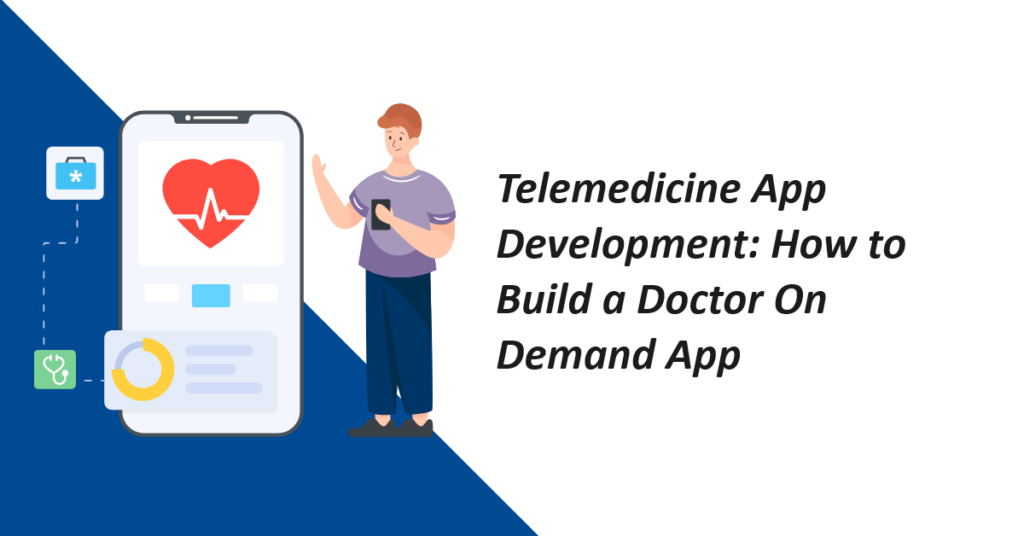The healthcare industry has undergone a massive digital transformation in recent years. Telemedicine apps have emerged as a crucial tool, providing patients access to healthcare professionals from the comfort of their homes. Platforms like Teladoc have revolutionized the way people consult doctors, offering convenience, affordability, and timely medical assistance.
If you want to enter this growing market, building a Teladoc clone using Cloneifypro is an ideal solution. A Teladoc clone script allows entrepreneurs to deploy a feature-rich, customizable telemedicine app with mobile compatibility in record time. This guide explores telemedicine app development, the working process, and how to build your own doctor-on-demand app.
Why Develop a Telemedicine App Like Teladoc?
Telemedicine apps are not just convenient—they are essential in today’s healthcare landscape. Key benefits include:
- 24/7 Access: Patients can consult doctors anytime, reducing wait times and emergency room visits
- Cost-Effective: Minimizes travel and consultation expenses for patients
- Remote Monitoring: Doctors can track patient health using wearable devices and app data
- Wide Reach: Connects healthcare professionals to patients in rural or underserved areas
By creating a Teladoc clone, you offer these advantages to patients while tapping into a lucrative digital healthcare market.
Step 1: Understand the Core Features of a Teladoc Clone
A Teladoc clone must replicate essential features of the original platform. These include:
- User Registration & Profiles: Patients and doctors can create secure accounts
- Doctor Directory: Browse and search doctors by specialty, location, and ratings
- Appointment Scheduling: Book instant or scheduled consultations
- Video & Audio Consultations: Secure real-time communication between doctors and patients
- Payment Gateway Integration: Support multiple payment options
- Prescription Management: Digital prescriptions for patients after consultation
- Ratings & Reviews: Build trust and accountability
- Admin Dashboard: Manage users, doctors, appointments, and revenue
Cloneifypro provides a ready-to-deploy Teladoc clone with these features, making it easier to launch a fully functional telemedicine app quickly.
Step 2: User Registration and Onboarding
The first step in telemedicine app development is user registration:
- Patients: Register using email, phone number, or social media accounts
- Doctors: Upload credentials, licenses, and specialties for verification
- Verification: Ensure doctors are qualified and trustworthy
- Profile Management: Users can edit personal information, medical history, and preferences
This process ensures a secure and reliable user base for your Teladoc clone.
Step 3: Doctor Discovery and Directory
A core feature of a Teladoc clone is the doctor directory:
- Search Filters: Specialty, location, consultation fees, language, and availability
- Doctor Profiles: Display experience, qualifications, ratings, and reviews
- Favorites & Recommendations: Patients can bookmark preferred doctors and receive recommendations based on prior consultations
This system makes it easy for patients to find the right doctor quickly and efficiently.
Step 4: Appointment Scheduling and Booking
Efficient appointment management is essential for telemedicine apps:
- Instant Booking: Patients can consult doctors immediately if available
- Scheduled Appointments: Book consultations for specific dates and times
- Calendar Integration: Sync appointments with users’ calendars for reminders
- Cancellation & Rescheduling: Users can easily cancel or reschedule consultations
Cloneifypro’s Teladoc clone provides a seamless appointment booking process, enhancing user satisfaction.
Step 5: Video and Audio Consultation
Telemedicine apps rely on real-time communication features:
- HD Video Calls: Secure and stable video consultations
- Audio Calls: Option for voice-only consultations when video is not needed
- In-App Chat: Exchange messages, share files, or follow up with doctors
- Screen Sharing: Doctors can explain medical reports, scans, or prescriptions in real-time
This functionality replicates Teladoc’s core service, ensuring patients receive quality consultations remotely.
Step 6: Digital Prescription and Health Records
A Teladoc clone streamlines patient care with digital records:
- Prescription Management: Doctors generate digital prescriptions after consultations
- Medical History: Store patient health data, lab results, and consultation history securely
- Reminders: Notify patients for medication intake, follow-ups, or lab tests
- Secure Storage: Health data is encrypted to comply with HIPAA or other regulations
This ensures patients have access to accurate and organized medical information anytime.
Step 7: Payment Gateway Integration
Seamless payment options are critical for user convenience:
- Multiple Payment Options: Credit/debit cards, net banking, e-wallets, and UPI
- Secure Transactions: Encrypt payment data for security
- Subscription Plans: Offer premium plans for unlimited consultations or health packages
- Automated Billing: Generate receipts and invoices automatically
Cloneifypro’s Teladoc clone integrates secure payment gateways to facilitate smooth financial transactions.
Step 8: Ratings, Reviews, and Feedback
Trust and accountability are key in telemedicine apps:
- Patient Reviews: After consultations, patients can rate and review doctors
- Doctor Ratings: High-rated doctors gain visibility in search results
- Feedback System: Collect user feedback to improve app features and services
- Transparency: Verified reviews ensure authenticity and reliability
This system helps build credibility for your Teladoc clone platform.
Step 9: Admin Dashboard and Management
A robust admin panel is essential to manage the platform effectively:
- User Management: Monitor patients and doctors
- Appointment Oversight: Track bookings, cancellations, and pending consultations
- Revenue Management: Track payments, commissions, and subscription revenue
- Analytics & Reports: Access insights on app performance, user behavior, and doctor activity
- Content Management: Manage blogs, FAQs, and notifications
The admin dashboard ensures smooth operation and efficient management of the Teladoc clone.
Step 10: Security and Compliance
Patient data security is paramount in telemedicine:
- HIPAA Compliance: Ensure app meets healthcare data protection regulations
- Data Encryption: Secure patient records and communication
- Two-Factor Authentication: Prevent unauthorized access to accounts
- Secure File Sharing: Encrypt reports, prescriptions, and medical files
Cloneifypro’s Teladoc clone includes advanced security measures to protect sensitive health information.
Step 11: Mobile App Integration
Most patients prefer mobile access to healthcare services:
- Patient App: Book appointments, consult doctors, receive prescriptions, and track health
- Doctor App: Manage schedules, view patient records, and conduct consultations
- Push Notifications: Remind users about upcoming consultations or health tips
- User-Friendly UI: Intuitive navigation for seamless patient and doctor experience
Mobile apps enhance accessibility and engagement, making your Teladoc clone more convenient for users.
Step 12: Marketing Your Doctor On-Demand App
Effective marketing helps attract users and grow the platform:
- Social Media Campaigns: Target potential patients and doctors
- SEO Optimization: Rank for keywords like “Teladoc clone,” “telemedicine app,” and “doctor-on-demand app”
- Referral Programs: Encourage users to invite friends and family
- Content Marketing: Publish health tips, blogs, and informative guides to drive organic traffic
A strong marketing strategy ensures the success of your telemedicine platform.
Step 13: Monetization Strategies
Your Teladoc clone can generate revenue through various channels:
- Consultation Fees: Charge a commission on each appointment
- Subscription Plans: Offer premium health plans for unlimited consultations
- Featured Doctors: Promote doctors’ profiles for higher visibility
- Advertisements: Display healthcare-related ads on the platform
These strategies ensure your telemedicine app remains profitable while offering value to patients and doctors.
Benefits of Using Cloneifypro’s Teladoc Clone
Cloneifypro offers a ready-to-deploy Teladoc clone with several advantages:
- Fast Deployment: Launch your doctor-on-demand app quickly
- Customizable: Tailor features, UI, and integrations to your market
- Mobile Apps Included: Android and iOS apps ready for deployment
- Secure and Scalable: Handle thousands of users and consultations safely
- Technical Support: Ongoing updates and assistance for smooth operation
Using Cloneifypro simplifies telemedicine app development and allows entrepreneurs to focus on growth and patient engagement.
Future of Telemedicine Apps
Telemedicine is expected to grow significantly in the coming years, with trends including:
- AI Diagnostics: Automated health assessments and recommendations
- Wearable Integration: Track vitals and health data in real-time
- Voice & Chatbots: AI-driven virtual assistants for basic medical guidance
- Global Expansion: Connect patients with doctors worldwide for specialized care
A Teladoc clone built with Cloneifypro is designed to adapt to these trends, ensuring long-term relevance and growth.
Conclusion
Building a doctor-on-demand app using a Teladoc clone is a lucrative and impactful business opportunity. With Cloneifypro, you can:
- Deploy a fully functional telemedicine platform quickly
- Customize features, UI, and branding for your target audience
- Integrate mobile apps for patients and doctors
- Monetize through consultations, subscriptions, and promotions
- Ensure secure, reliable, and seamless healthcare experiences
By leveraging a Teladoc clone, entrepreneurs can tap into the growing digital healthcare market and provide essential services to patients globally.
Get started with Cloneifypro today and launch your own doctor-on-demand telemedicine app with ease!
FAQ
1. What is a Teladoc clone?
A Teladoc clone is a ready-made telemedicine app that replicates Teladoc’s features for doctor-on-demand services.
2. How does a Teladoc clone work?
It enables user registration, doctor discovery, appointment booking, video consultations, prescription management, and secure payments.
3. Can I customize the Teladoc clone?
Yes. Cloneifypro allows full customization of UI, features, and mobile apps.
4. Does it include mobile apps?
Yes. Both Android and iOS apps for patients and doctors are included.
5. How can I monetize the app?
Revenue can be earned through consultation fees, subscriptions, featured doctors, and advertisements.
6. Is the Teladoc clone secure?
Yes. Cloneifypro ensures HIPAA compliance, data encryption, and secure payment integration.








